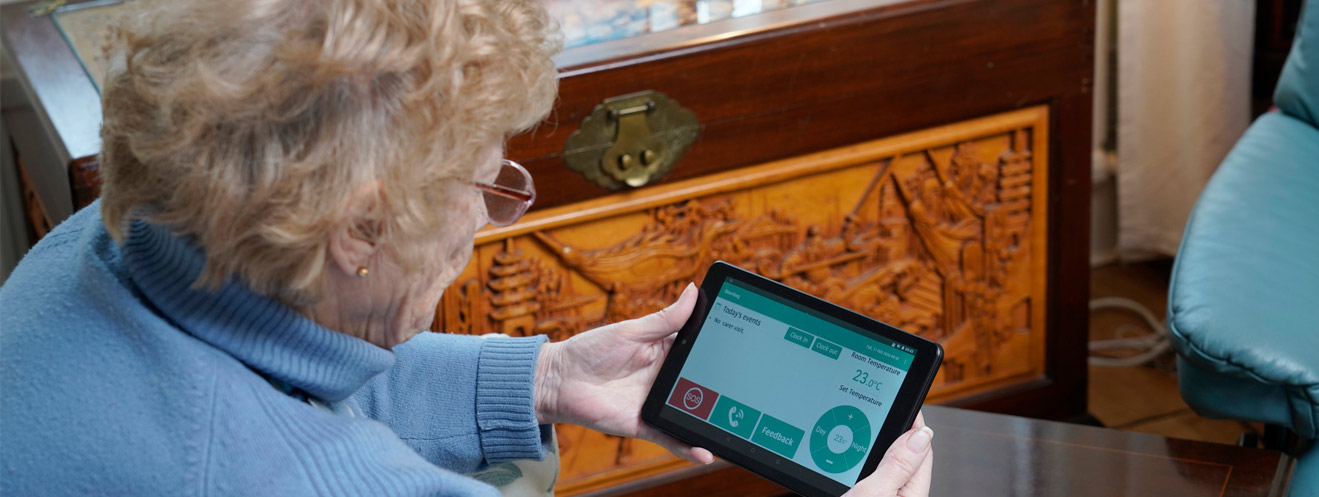
Welcome to my blog post, as I continue to share my role in the development of Beanbag Care, Secure Meters’ exciting new development into independent living solutions.
A significant influence on Secure Meters’ initial ambitions for Beanbag Care was the feedback kindly shared by Bristol City Council, who helped us identify gaps in the service provision for older people.
Social isolation was singled out as a particular issue, and our technical team began developing a tablet interface that enabled users to communicate with family and loved ones – plus provide all the other functionality required to manage and deliver Beanbag Care as an independent living solution.
We understood that the home interface would be crucial to Beanbag Care’s future success, as regardless of the USPs or strength of the system, if the end user didn’t understand its relevance or chose to ignore it, it would fail. It was essential that the tablet would become to be seen as a ‘friend’ in the home.
My role was again to represent older people as part of the development process, and to use my many years of specialising in older person care to ensure the tablet fully met their needs and choices.
In this instance I decided direct feedback as a necessity, so I set up a series of focus groups via a brilliant organisation called the Bristol Older People’s Forum (BOPF).
Volunteers from the BOPF ranged from 61 to 91 years of age; we met regularly over a coffee, and all members were eager to get involved.
Once everyone had had the opportunity to test the tablets, they were asked a range of questions about the experience.
These included: can you see and hear audio and visual alerts? Where would you position the device in the home? Or more nuanced questions around understanding the value of the concept of remote monitoring and home care connectivity.
It was then my responsibility to interpret the feedback so our technical development team could make the necessary changes.
What we gathered and learned from these groups was invaluable, and resulting changes included:
Other aspects of the tablet interface received very positive feedback.
These included the user’s ability to dictate copy (if they wished) as part of the post care visit feedback functionality, or the simple one to five ‘smiley face’ feedback input (also for post care visit feedback).
Some also liked fact that designated carers are alerted if the users tablet battery is running low, via their phone app, so they can then remind them to charge it.
However, what always rings true is that regardless of how tailored a device is to the user in question, people will always require training and support to learn how to use it.
It’s also the case that older adults are becoming increasingly aware of technology, driven further by the impact of the current pandemic. Families and care organisations are finding new ways of keeping in touch.
What’s certainly true is that this is a really exciting space to be involved in, particularly due to the scale of positive impact that new technology can have on peoples’ lives.